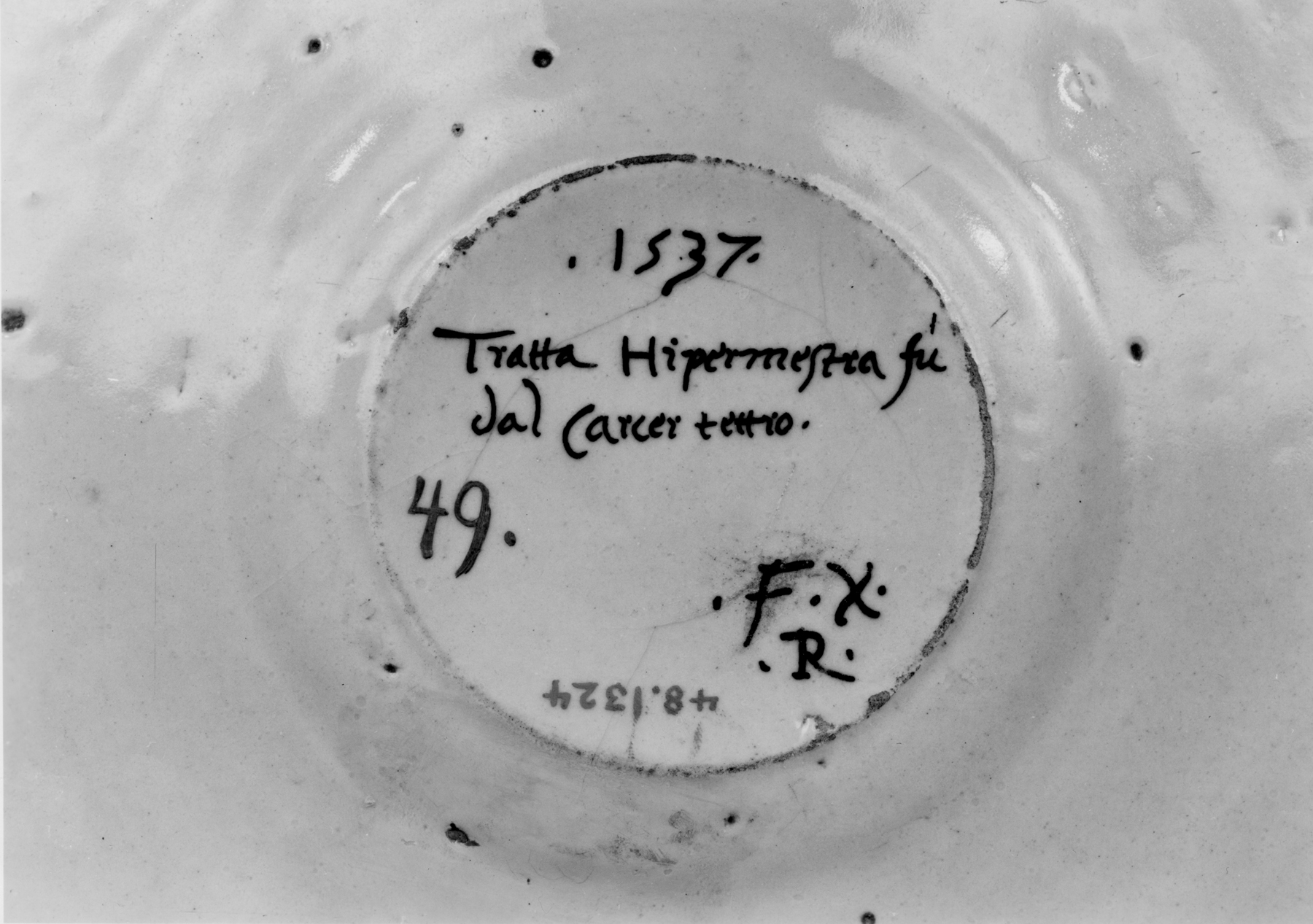Plate with Hypermnestra Watching Lynceus Take Her Father's Crown
(Renaissance Europe )
The decoration of this istoriato (with a story) plate consists of an episode from a Greek myth in which a king named Danaus gave his daughter Hypermnestra in marriage to her cousin Lynceus. Danaus feared losing his throne to Lynceus, however, and ordered his daughter to kill her husband on their wedding night. Because Lynceus was so kind to her, Hypermnestra instead helped him to flee. Danaus attempted to have his daughter punished through court proceedings, but the goddess of love, Aphrodite, intervened and saved her. Eventually, Lynceus killed Danaus, ruled in his place, and was reunited with Hypermnestra.
The complicated narrative is distilled in a single scene. A sword-bearing Lynceus strides in from the left, threatens Danaus, and takes his crown. Hypermnestra, torn by emotion, looks down on the scene from a window. The plaque inscribed "Love conquers all," (quoted from the Roman poet Virgil's Eclogues) carried by Cupid, Aphrodite's son, foretells a happy ending with Hypermnestra and Lynceus reunited. The ancient subject was obscure enough that the artist, Francesco Xanto Avelli, included identifying inscriptions under the two male figures. For more on Xanto Avelli see no. 48.1373 and for more works by him in the Walters, click on his name in the "creator" field; for maiolica ware, see 48.1336, and for istoriato ware, see 48.1487.Inscription
Provenance
Provenance (from the French provenir, 'to come from/forth') is the chronology of the ownership, custody, or location of a historical object. Learn more about provenance at the Walters.
H. Wencke Collection, Hamburg (no. 49) [date and mode of acquisition unknown] (?); J. Seligmann, Paris [date and mode of acquisition unknown]; Henry Walters, Baltimore, May, 7 1908, by purchase; Walters Art Museum, 1931, by bequest.
Geographies
Italy, Urbino (Place of Origin)
Measurements
7/8 x 10 1/16 in. (2.3 x 25.5 cm)
Credit Line
Acquired by Henry Walters, 1908
Location in Museum
Accession Number
In libraries, galleries, museums, and archives, an accession number is a unique identifier assigned to each object in the collection.
In libraries, galleries, museums, and archives, an accession number is a unique identifier assigned to each object in the collection.
48.1324




